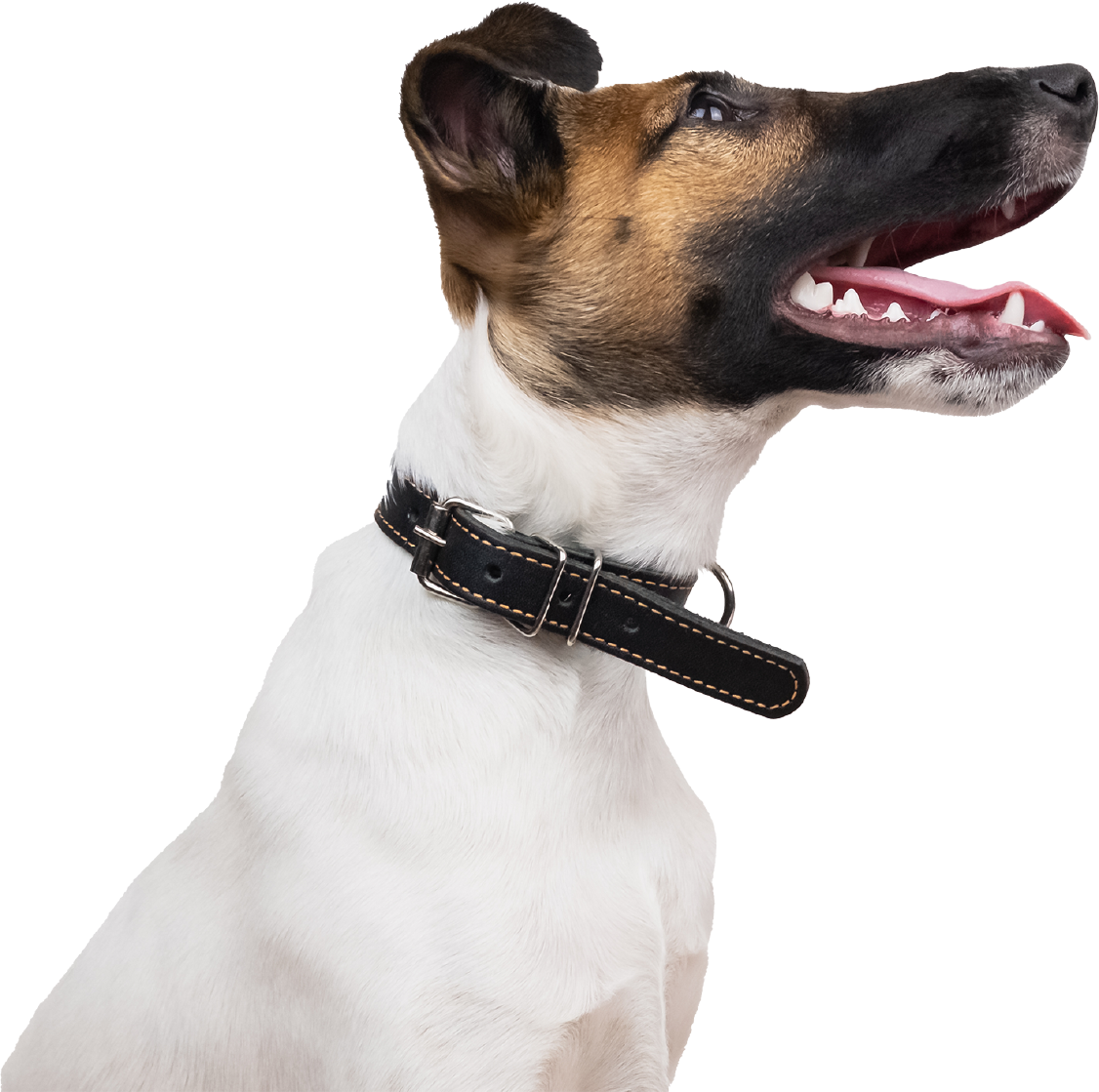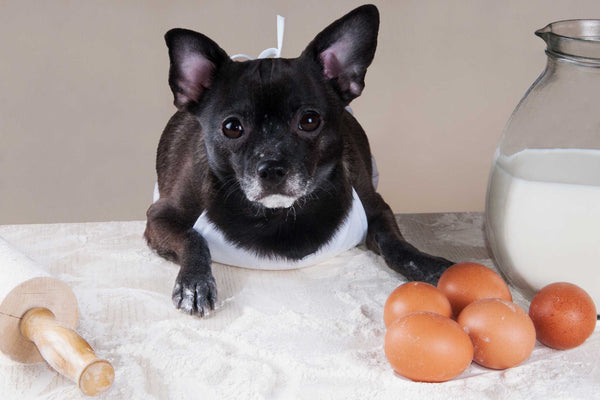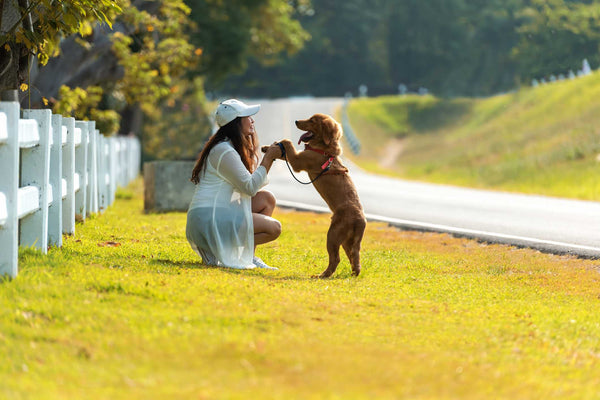How to Correct Dogs that Pull on the Leash

Leash pulling is one of the most common behavioral issues that dog owners encounter. It can be frustrating, and even dangerous, especially if you have a large breed who is difficult to handle when pulling. There are a number of reasons that dogs pull, and correcting pulling is a process that takes patience and perseverance. If your dog is a puller, don’t expect them to stop with just a couple days, or weeks, maybe even months, of training. But you will certainly see quick improvement once you begin training! However, if loose leash walking training and impulse control isn’t reinforced and practiced, your dog will likely go right back to pulling because they are getting the message that pulling is okay each time they’re allowed to do so, especially because it gets them where they want to go when it’s allowed. Training when it comes to walking on leash should be implemented into their regular routine.
The reason dogs pull on the leash is simple: to get where they want to go right away. They want to explore their environment—sniffing, marking, rolling, and they sometimes want to interact with others coming their way—humans, dogs, and other creatures. Having control as a handler is important for everyone’s safety, and of course, it will allow you to enjoy your walks together a bit more!
Training to Correct Pulling:
Loose leash walking/ “heel”
Hold the leash closer to your dog’s collar or harness with just a foot or so of slack (kept loose without tension) and have them walk next to you on one side. Whether you choose the left or the right side, make sure side is consistent every time they are in “heel.” When you stop walking, they should stop walking also and stay right at your side—often handlers will implement the expectation for them to sit at your side when you stop. If they try to keep pulling ahead or to the side when you stop, you immediately turn around and walk in the other direction and they are expected to remain at your side again. They must stay in “heel” until they are released with a word like “free.”
Start with just a few steps in the beginning so they understand that they will be staying next to you and stopping with you before you practice this on longer walks. You may have to keep turning around every few steps when first implementing this training, so consistency and patience is key so that your dog starts to understand what is expected of them. When you are done working on “heel” you can let your dog have the whole leash to sniff and use the bathroom freely by releasing them, but if they start pulling ahead again, keep turning in the other direction as long as they persist, and bring them back to “heel.” This is important for dogs to learn not only to keep them from pulling but also when passing by other people or animals to limit reactivity.
Choosing the right collar—prong collars, harnesses, gentle leaders, e-collars, slip collars, martingales, and so on!
There are a lot of opinions out there about what equipment and types of collars are acceptable to use for dogs, but if the collars and harnesses chosen are not hurting your dog and you are fully confident in your ability to use them properly, then use the equipment that works best for both of you. These tools are made for us to have a better experience with our dogs, and what works for one dog might not for another. If you are unsure how to use equipment properly, it’s important to work with a professional trainer to ensure proper fit and use. Once you have the right collar for your dog—taking their size, breed, strength, and tendencies into consideration—and are using it appropriately it can be an added tool in correcting their pulling. A collar should never act as the sole elimination method of pulling, only as aid—training is a must regardless.
Impulse control
While some training commands might not be directly related to leash pulling, the more your dog knows their commands, the better equipped you both will be in a variety of situations. Sometimes when a dog pulls on the leash it’s because they are trying to get to something they want immediately, maybe even a squirrel or small creature. If they learn to sit and wait or the “leave it” command then these impulses can be controlled so that they do not take off while on the leash, which can be a very dangerous situation for the both of you and others in the vicinity.
Name recognition
Your dog should not only know their name, but they should acknowledge you when you call their name. When a dog’s name is said by their owner, the response should be to stop what they are in the middle of and put their focus on you. A good way to practice this is by calling their name and as soon as they look at you, reward. Eventually you can add in more distractions, continuing to reward when you have their attention, ultimately expecting name recognition in all scenarios.
“Come”
This is like name recognition, but the expectation with “come” is that instead of your dog acknowledging you only, they must come straight to you and stop in front of you. This is a tough command to master for many dogs and owners and it takes a lot of practice—daily. Even with some the most well-trained dogs, owners will report that recall could be improved, particularly in distracting situations and environments. If your dog is pulling on the leash, especially if they are trying to go after something, or if they have broken free and are running into a dangerous situation like traffic, then when you say “come” it could be lifesaving in that they hear the command, stop what they are doing, and run back to you. One way to train “come” is by backpedaling in the opposite direction until your dog comes back and stops in front of you. The reason for this is that dogs instinctually chase, so if you are running after them then they may keep running away from you. But if you are going in the opposite direction, it may lure them to you.
Nothing but happy walks ahead for you and your best pal!
 Shay Siegel is a young adult author, freelance writer, and editor from Long Island, NY. She has a BA from Tulane University and an MFA in Writing from Sarah Lawrence College. Always a lover of animals, Shay had several cats growing up. She's now a dog mom to the snuggliest rescue pit bull, Bernie. She enjoys writing on a variety of topics and sharing her love and knowledge of animals with others!
Shay Siegel is a young adult author, freelance writer, and editor from Long Island, NY. She has a BA from Tulane University and an MFA in Writing from Sarah Lawrence College. Always a lover of animals, Shay had several cats growing up. She's now a dog mom to the snuggliest rescue pit bull, Bernie. She enjoys writing on a variety of topics and sharing her love and knowledge of animals with others!

Ready to gain some healthy superpowers?
Looking to support your dogs immune system or digestive health? Need joint or calming support?
Let Waggy Show you the way

